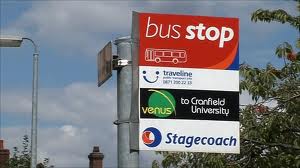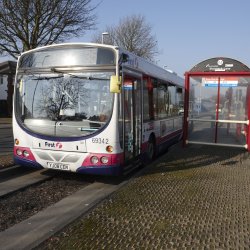Is England split in three now as far as bus services are concerned? London – enjoying one of the best bus services on the planet. The Metropolitan and large urban areas – where the bus remains a player and so far cuts in supported services have been minimised. And then the rest – where for some time the bus has been left with a niche or safety net role – and where some local authorities have been in an indecent haste to cut off the remaining life support.

England 1: London - world class bus provision
Or is it two Englands?
It’s a broad brush assessment and as such very open to critique. For example, what about the analysis that Stagecoach et al prefer which is that there’s two Englands. Down south you can hardly find a seat on a bus for the prosperous environmentally concerned citizenry who gave up their BMWs long ago in favour of the buzz they get from experiencing the joys of partnership-driven harmony. Meanwhile it remains grim up North as people continue to buy cars whilst frustratingly also continuing to cling to misguided ideas about public transport being an accountable public service. The counter-charge to this two Englands analysis would be that growth down south is from a low base with trips per head often low compared with the Mets. High parking charges and cramped street layouts in prosperous standalone cathedral cities are a big help too. Plus the scope for benevolent dictatorships of medium size bus operations which can focus on their neat and tidy markets very effectively – and often do.
Meanwhile in Whitehall these kinds of analyses are usually besides the point. Here, it’s always a tale of two Englands – London, and then beyond that an undifferentiated tiresome mass / mess. For buses historically this has meant that policy has tended to fall back on the vague hand wringing hope that if only the unique circumstances of certain cathedral cities could be magically replicated across entirely different economic, social and transport geographies then everything would be fine. One policy size therefore fits all. Except for London of course.

England 2: Mets and urban areas - bus remains a player, cuts so far minimised
Why does any of this matter?
Well, because although any broad categorisation will be open to critique, it is clear that outside London bus services are not an undifferentiated mass and that the Government’s post-Competition Commission review of bus policy needs to recognise this.
For example, in rural areas how long can we continue with a situation whereby the vast majority of shared and public transport is subsidised – but through different funding pots each with their own administrative costs? Already we are seeing moves to pool budgets on social services, healthcare, education and conventional public transport in parts of England. If you throw in the local branch line, and layer in community transport on top, you start to open up some exciting opportunities for single, cost-effective rural transport networks covered by integrated ticketing and branding. They’ve been doing this in parts of Europe for years.
A DfT bus policy review could give this process a helping hand. In large urban areas and conurbations it should be about growth and integration with buses part of single urban public transport networks bound together through Oyster-style ticketing. In those smaller, standalone cathedral towns and cities where existing arrangements are working well – then why change it? And as for London – well it goes without saying that there’s no need for major policy change there.

England 3: The rest - bus marginalised, cuts to supported services in some areas
Different Englands, different policies
In short different Englands require different policy approaches on bus. The alternative is policy as usual leading to decline as usual. The recent analysis that we commissioned on the impact of policy as usual on the Metropolitan areas made for depressing reading in terms of patronage loss, fares increases and service decline. We are working to try to ensure these forecasts don’t come true but we can’t do it alone.
We need a national bus policy that recognises the challenges and opportunities that the different Englands face. This matters for real people in these Englands because of the dire implications of getting it wrong for those who have no car and no voice. Like for those people who live on one of the most deprived estates in the country in Hartlepool on which there are no facilities and now no bus services either. So no transport to get to jobs, the shops or to the doctors (there’s a video on the Channel Four news website with some genuinely shocking interviews on what this means for people on the estate). Or for the people who are writing into Citizens Advice Bureaus in increasing numbers saying that their benefits have been docked because there’s no bus to get them to a job they’ve been offered. Or who may lose the job they already have because the bus service no longer makes shift work possible. These are the people who will lose out, and in anger and despair, and in ever greater numbers if we don’t get a policy on bus that works for these very different Englands.
Jonathan Bray
This article was first published in Coach and Bus Week.


